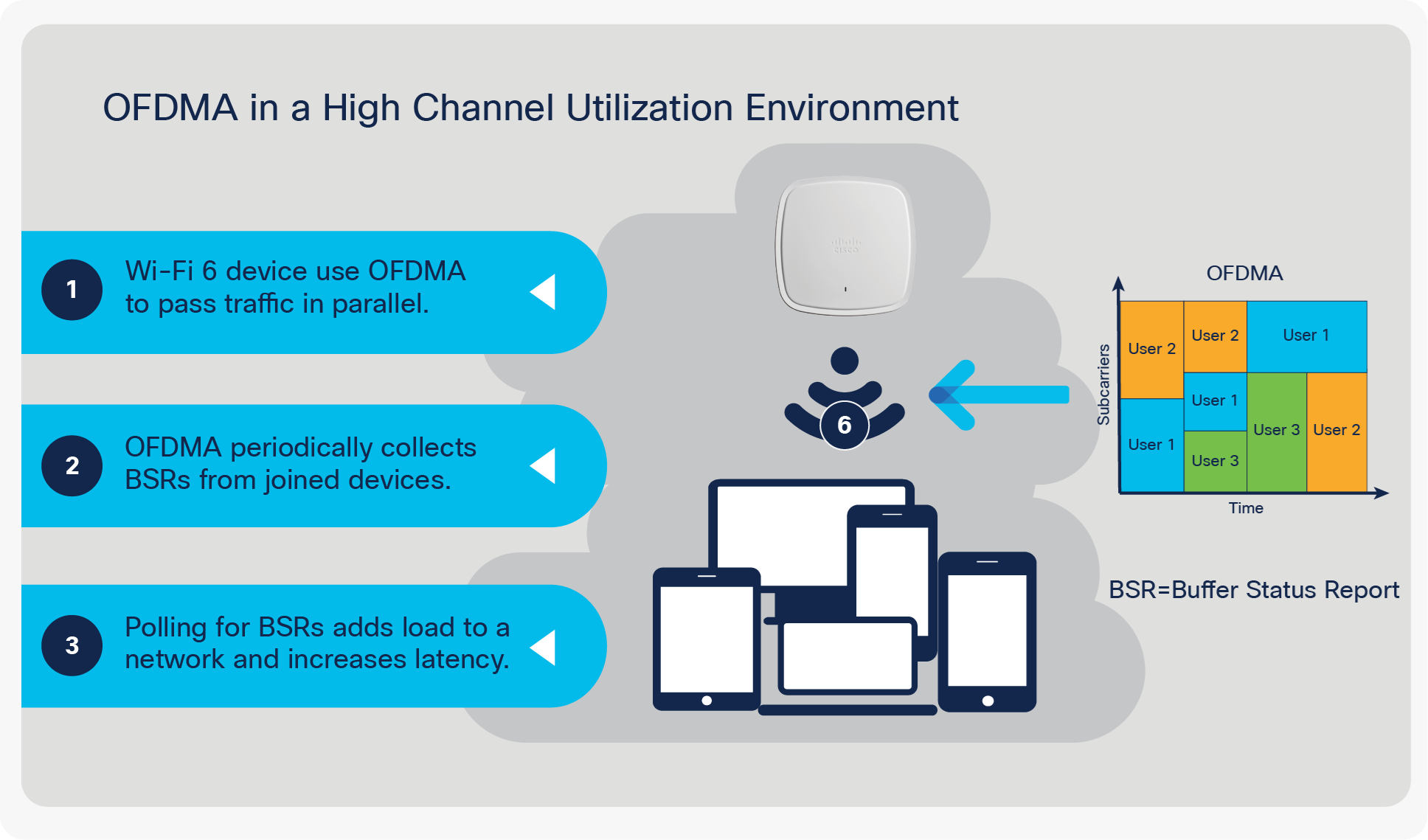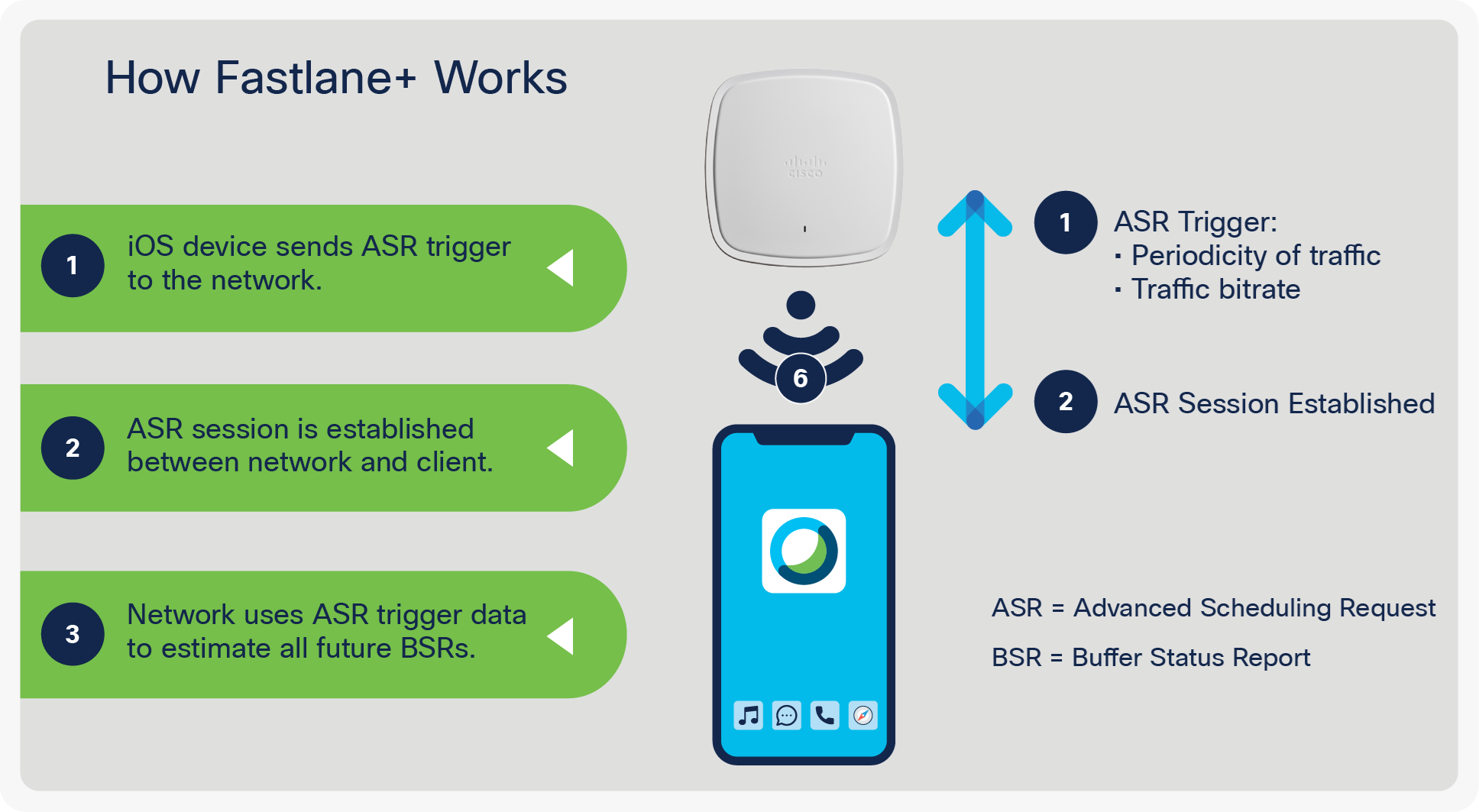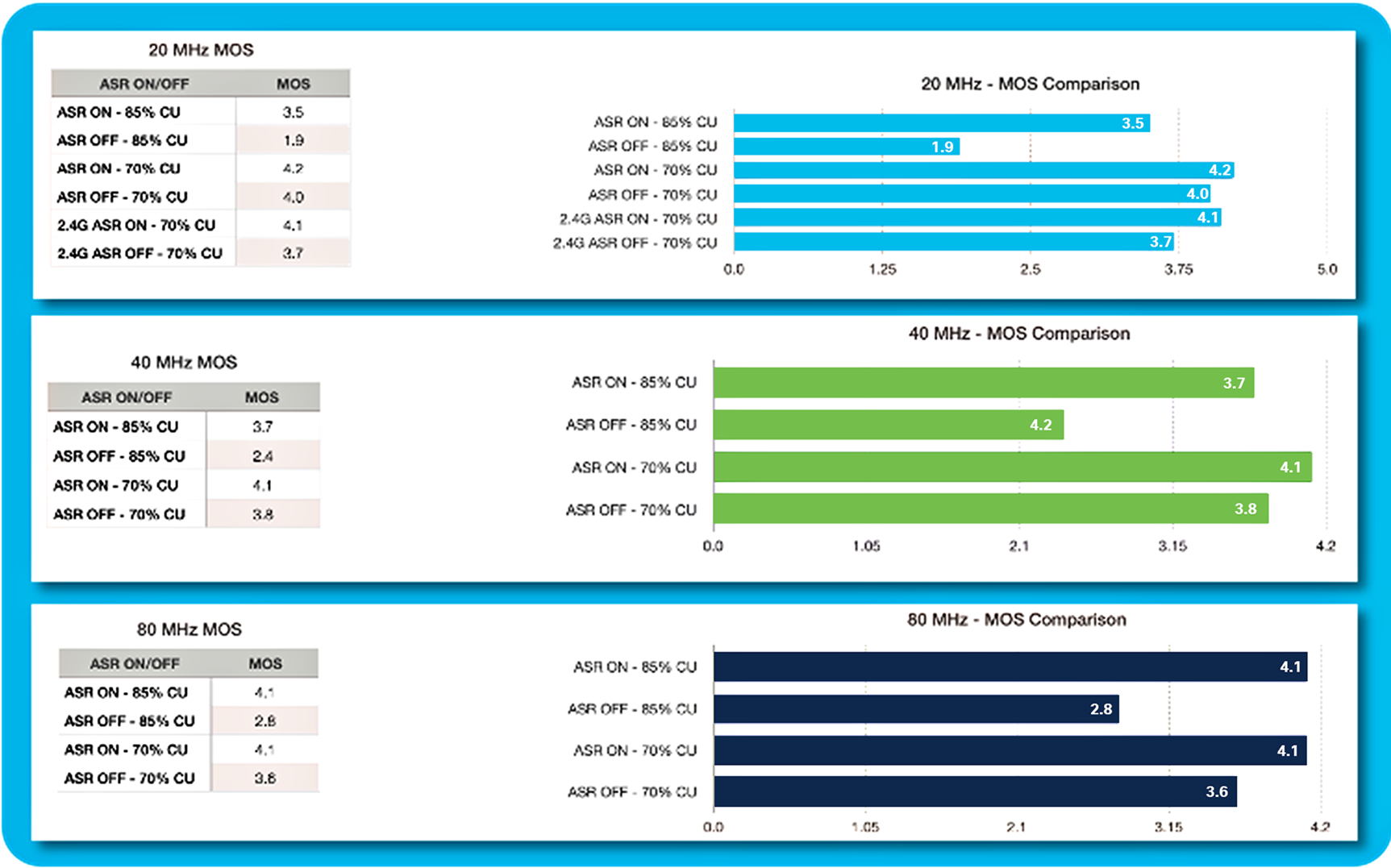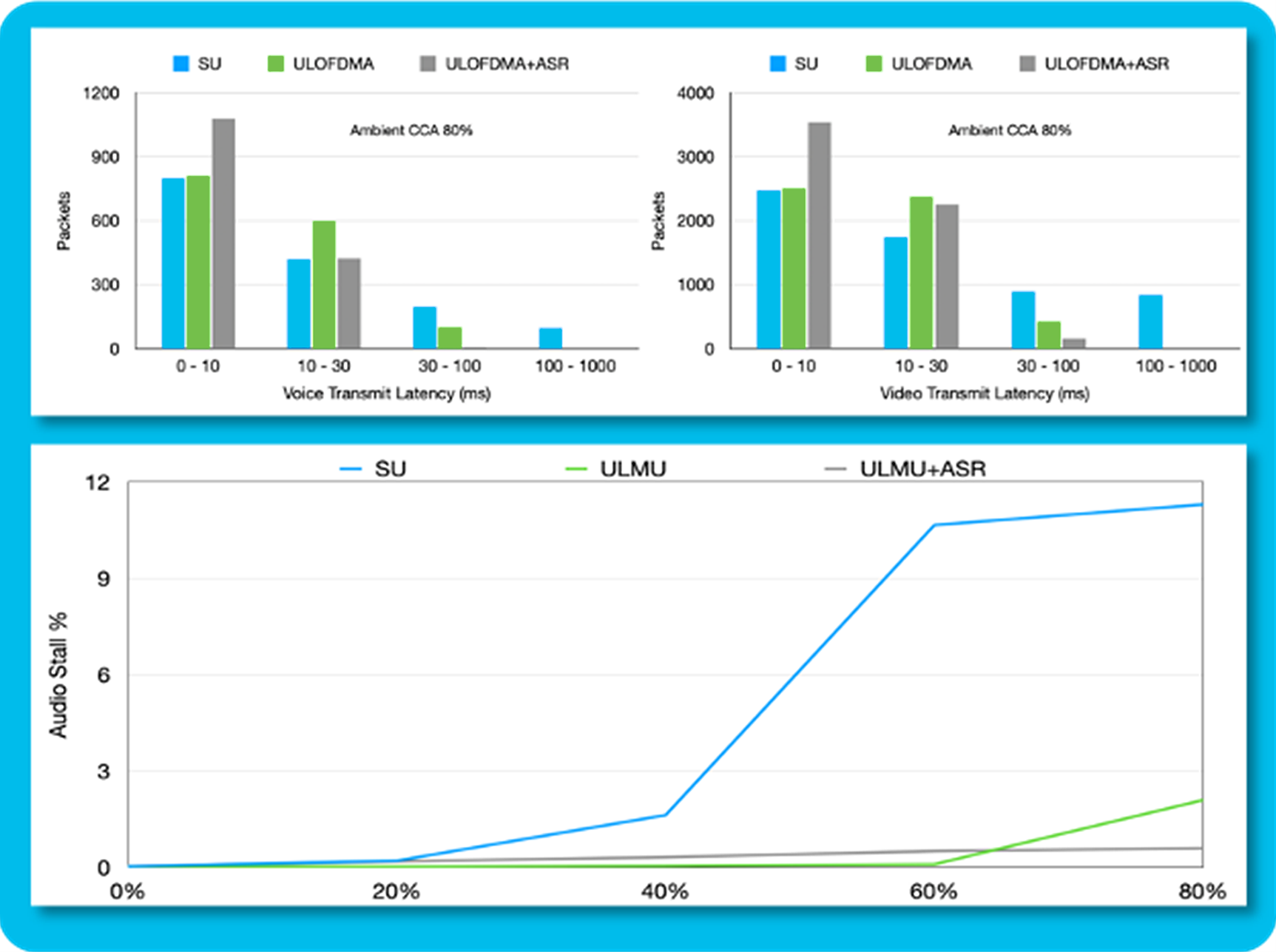Fastlane+ White Paper
Available Languages
Bias-Free Language
The documentation set for this product strives to use bias-free language. For the purposes of this documentation set, bias-free is defined as language that does not imply discrimination based on age, disability, gender, racial identity, ethnic identity, sexual orientation, socioeconomic status, and intersectionality. Exceptions may be present in the documentation due to language that is hardcoded in the user interfaces of the product software, language used based on RFP documentation, or language that is used by a referenced third-party product. Learn more about how Cisco is using Inclusive Language.
Cisco’s Fastlane+ is a co-developed solution with Apple that significantly improves the experience of any Wi-Fi 6 capable iPhone or iPad connected to a Cisco Wi-Fi 6 network. Cisco’s existing Fastlane solution has provided an enhanced user experience on iPhones and iPads with optimized roaming and QoS prioritization of time-sensitive VoIP applications through Apple’s Device Management Protocol. Fastlane+ builds upon this success by enhancing Wi-Fi 6’s powerful OFDMA scheduler, enabling iOS 14 and above Wi-Fi 6 capable Apple devices to stream high-quality voice and video content efficiently under congested RF environments. Together, Fastlane+ and Fastlane ensure users will have the best possible voice and video application experience on Apple devices when connected to a Cisco wireless network.
Table 1. Cisco and Apple Fastlane+ compatibility matrix

Congested networks without Fastlane+
In a Wi-Fi 6 network, multiple Wi-Fi 6 endpoints can pass traffic to the same Access Point (AP) in parallel, using uplink MU-OFDMA (multiuser OFDMA). Uplink MU-OFDMA dramatically increases Wi-Fi 6’s RF efficiency over previous generations of Wi-Fi by intelligently scheduling multiple endpoints’ traffic into the same AP transmission and providing parallel paths to each user. Uplink MU-OFDMA reduces network latency and maintains a great user experience well beyond the levels of previous generations of Wi-Fi. However, even Wi-Fi 6 eventually faces efficiency loss and increased latency with higher network demand, negatively impacting the end-user experience. To make intelligent and dynamic scheduling decisions, MU-OFDMA uses a Buffer Status Report (BSR) periodically by polling all the associated endpoints, which tell the AP what access category of data they plan to send next. In a heavily loaded network, polling for these BSRs further increases the latency and load, ultimately worsening any voice and video content quality.

Limitations of OFDMA in a high channel utilization environment
How Fastlane+ solves the problem
Fastlane+ solves this problem by enhancing the existing Wi-Fi 6 MU-OFDMA solution and directly cooperates with Wi-Fi 6-capable Apple endpoints running iOS 14 and later software. Rather than requiring the AP to poll the endpoints for BSRs periodically, when an iOS endpoint decides to use a voice or video application, it will automatically send an Advanced Scheduling Request (ASR) trigger to the AP.
This ASR trigger:
1. Informs the AP that the endpoint is about to start uplink voice or video traffic
2. Provides the AP with the endpoint’s required traffic periodicity and bit rate
Once the Cisco Catalyst® 9130AX Series access point receives an ASR trigger, the AP initiates an ASR session with the iOS endpoint. Using the ASR trigger’s data, the AP can now intelligently manage endpoint BSRs without polling. This method reduces the overhead and load on the network while still providing the dynamic information required to schedule efficiently. With less bandwidth required, latency is significantly reduced, and a high-quality voice and video experience can be maintained, even in a congested network.

How Fastlane+ prioritizes voice and video traffic
Benefits of a Fastlane+ enabled network
In a high Channel Utilization (CU) environment, a network with Fastlane+ enabled is consistently superior to one in which Fastlane+ is disabled or unsupported. Channel utilization is an indication of network load. To demonstrate this, Cisco’s AP test engineers used Ixia’s IxChariot to create an over-the-air test that would simulate a 70% to 85% channel utilization test environment. The team ran the Fastlane+ solution through rigorous performance tests, comparing the Mean Opinion Score (MOS), packet latency, network jitter, and raw throughput with Fastlane+ both enabled and disabled. The following are the results of these performance tests.

Fastlane+ enabled vs. disabled comparing MOS (Fastlane+ is referred to as ASR)

Fastlane+ enabled vs. disabled comparing latency (Fastlane+ is referred to as ASR)
As shown in Figures 3 and 4, there was a significant improvement in MOS and latency when comparing Fastlane+ was enabled vs. when it was disabled. These improvements hold true regardless of the network’s bandwidth or channel width. As the channel utilization increases in the environment, so do the benefits of Fastlane+. The improvements in MOS, latency, jitter, and throughput all directly translate into a better user experience in real life. The following table depicts those benefits.
Table 2. Benefits of a Fastlane+ enabled network
| Metrics |
Performance Increase |
Benefit |
| MOS Score |
40% increase |
Better voice and video quality |
| Latency |
30% increase |
Greater reliability |
| Jitter |
10% increase |
Greater reliability |
| Throughput |
20% increase |
High-definition streaming |
The significant improvement in MOS, latency, jitter, and throughput with Fastlane+ directly translates into a better user experience, not only for Cisco and Apple VoIP applications such as Cisco WebEx® and FaceTime but for all voice and video traffic in general. In summary, Fastlane+ takes the already efficient Wi-Fi 6 solution to the next level by lowering network latency for the entire network and ultimately improving the experience of even devices that do not support Fastlane+.
Fastlane+ documentation
● Video demo
◦ https://youtu.be/uYlHpgZ6XTM
● FAQ
◦ https://www.cisco.com/c/en/us/solutions/collateral/enterprise-networks/faq-c67-744670.html
Catalyst 9800 Series controllers documentation
● Home page
◦ https://www.cisco.com/c/en/us/products/wireless/catalyst-9800-series-wireless-controllers/index.html
Catalyst 9130AX Series access points documentation
● Deployment Guide
● Data Sheet